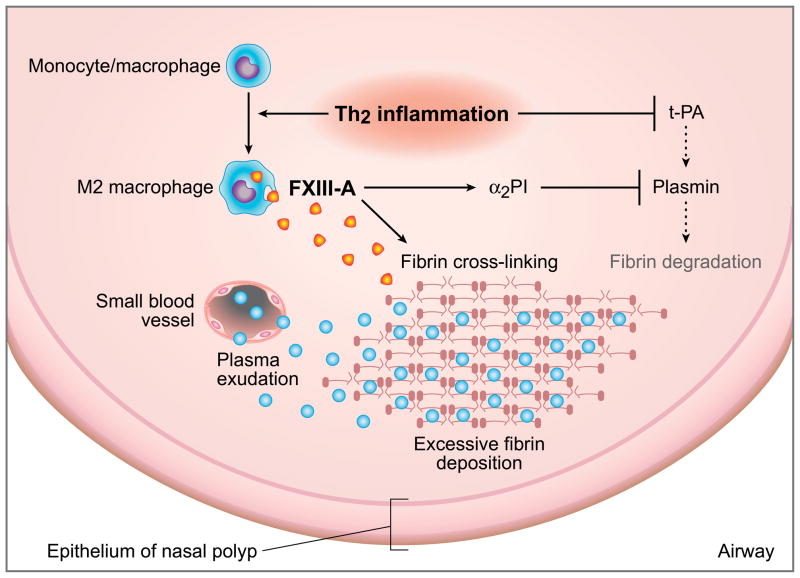Figure 6.
Hypothetical model in which the Th2 milieu facilitates excessive fibrin deposition in NP tissue. Th2 inflammation leads to recruitment of M2 macrophages and subsequent production of FXIII-A that induces excessive fibrin deposition by cross-linking of fibrin and via the anti-fibrinolytic effect through binding α2PI to fibrin. In the presence of Th2 cytokines, t-PA levels are reduced, causing impaired plasmin generation, which in turn decreases fibrinolysis.

